Popular Articles
- If You Have Bursitis - Avoid These Foods
- Stop Bursitis with Turmeric
- Acusil Supplement Facts
- Medications That May Interact with Acusil
- 8 Ways to Stop Recurring Bursitis
- 6 Ways to Heal Shoulder Bursitis
- Home Treatments for Hip Bursitis
- Reduce Your Risk for Sports-Related Bursitis
- Capisette Supplement Facts
- 10 Remedies for Water Retention
 Naturally Treat Bursitis. Heres How...In This Article
Learn about 8 natural treatments for bursitis. You may have heard about rest, ice, and trigger foods - but we have listed a few more here to consider.
Although often mistaken for arthritis, bursitis is a distinct condition. Arthritis is inflammation of the joint itself, and bursitis is the inflammation of the bursae, fluid-filled sacs located in areas of movement in the body. Bursae are often located between tendons and bones or in the joints. The bursae produce synovial fluid, a lubricating liquid that helps protect the joints and prevents soft tissues from rubbing against the bones. The principal bursae are located at the knee, hip, shoulder, and elbow, although bursitis can also occur in the hands, feet, and wrists. When the bursae become inflamed, they can cause pain in the joints. The pain often feels like stiffness or a mild ache that gets worse with movement. The area involved may feel swollen; it may even feel warm. Bursitis is often linked to strenuous exercise or repetitive motions, and it can affect people of any age. It may also be caused by bacteria or other health conditions, such as rheumatoid arthritis. Once an individual has experienced an episode of bursitis, it is more likely to flare up again. The primary treatment for bursitis should include resting the affected area and applying ice to diminish the inflammation.
Bursitis can be treated with natural remedies, but patients with the condition should monitor the pain and swelling. If the natural remedies for bursitis do not improve symptoms within a few days, an individual with bursitis may wish to be evaluated by a medical professional. As soon as symptoms appear, an individual with bursitis should see improvement by restricting the activity that may have caused it to flare up. The following natural remedies can help symptoms improve even faster. Rest the AreaWhen dealing with bursitis, resting doesn't mean staying completely still. Instead, patients with bursitis should refrain from doing the repetitive or strenuous motion that might have brought on the pain. Completely restricting movement in the joint could cause scar tissue to build up, permanently limiting the range of motion. Keeping the joint moving gently can help symptoms improve. As soon as it's possible to move the joint without pain, patients may benefit from performing range-of-motion exercises to gently stretch the joint and keep it mobile. Strengthening the muscles that surround the joint can also help improve the condition. Along the same lines, changing the type of activity that may have led to bursitis can help patients manage the condition. For example, if repeated kneeling while washing the floor causes knee pain, individuals with bursitis can try cleaning the floor with a long-handled mop instead. If the bursitis was caused by repetitive arm movements in the workplace, perhaps rotating through a variety of different activities will help prevent a flare in the future. Ice and HeatThe first incidence of bursitis may be treated with applications of ice packs to the affected area. A patient can apply ice for 15 minutes on the site of swelling with 15 minutes off, repeating the pattern for an hour a few times per day.
If the pain continues past 48 hours, or if this is not the patient's first incidence of bursitis pain, the patient may find it beneficial to alternate ice with moist heat. The patient may apply ice for 15 minutes and then apply moist heat for an additional 15 minutes. This pattern can continue for an hour and be repeated twice per day. Homemade heating pads can be made by dampening a disposable diaper with water and heating it in the microwave. Heating it at a low setting for a few seconds at a time can help prevent burning. Alternatively, a sock can be filled with rice, dried garbanzo beans, or flaxseeds and warmed in the microwave for approximately one minute. Remove Calcium DepositsCalcium deposits can form after many years of experiencing bursitis. Creating a more acidic PH level in the body can naturally remove these calcium deposits gradually. A patient with bursitis can eat more acid-forming foods to raise PH (see table below).
Drinking a tablespoon of apple cider vinegar diluted with water daily can help dissolve calcium deposits in the body as well.
|
||
| Next Article: If You Have Bursitis - Avoid These Foods |





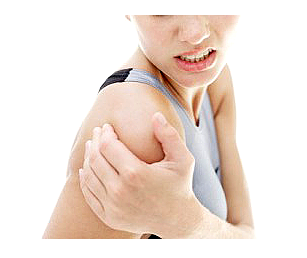 Anti-inflammatory drugs can be taken, but this type of medication can irritate the stomach. Steroid injections can help reduce inflammation at the joint site, but they also suppress the immune system, which can be an obstacle to healing. In more extreme cases, the bursae can be surgically drained or even removed.
Anti-inflammatory drugs can be taken, but this type of medication can irritate the stomach. Steroid injections can help reduce inflammation at the joint site, but they also suppress the immune system, which can be an obstacle to healing. In more extreme cases, the bursae can be surgically drained or even removed.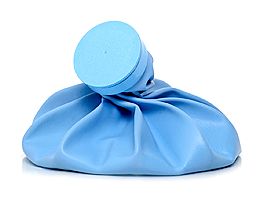 After 24 to 48 hours, the pain and swelling should subside significantly. For smaller areas of pain, the patient can rub an ice cube over the affected location for a shorter time.
After 24 to 48 hours, the pain and swelling should subside significantly. For smaller areas of pain, the patient can rub an ice cube over the affected location for a shorter time. 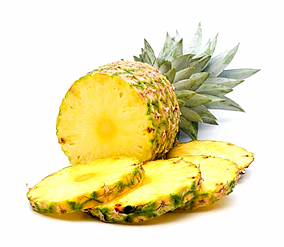 Grab the Citrus
Grab the Citrus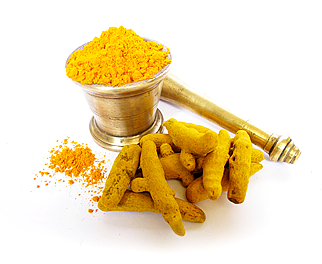 Nutrition can also play a role in treating bursitis naturally.
Nutrition can also play a role in treating bursitis naturally.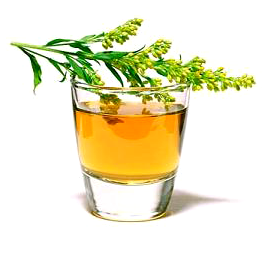 Castor Oil
Castor Oil